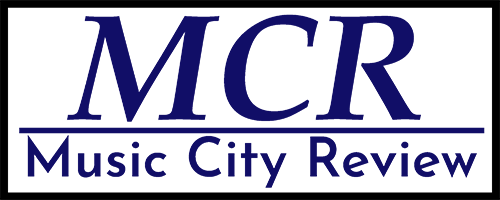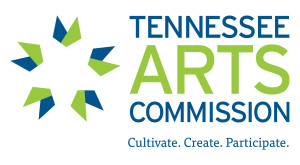Dum Spiro, Spero: SONUS Choir’s Tenth-Anniversary Concert
One of the things I love about being relatively still new to Nashville is discovering musical organizations unknown to me that call the Music City their home. On May 10, 2024, I attended SONUS Choir’s—a Nashville-based modern acapella (or a Capella) choir—concert held in Wightman Chapel at the Scarritt-Bennett Center, located just East of Vanderbilt University, celebrating their tenth anniversary. Their program consisted of several pieces of the contemporary choral-music canon, but the highlight was undoubtedly the world premiere of Dum Spiro, Spero, written by the choir’s Artistic Director and co-founder Timbre Cierpke, a moment that made us all feel privileged to be a part of this special event.

As mentioned, one of the purposes of this concert was to commemorate SONUS’s ten-year anniversary and their meaningful history. According to Cierpke, SONUS started as an alumni-singing ensemble made up of former members of the Trevecca Madrigalians, a touring acapella choir of Nashville’s Trevecca Nazarene University. However, since 2018, Cierpke and choir leadership started on their journey toward taking SONUS to new levels, holding its first open auditions. Today, SONUS continues to mature and develop, comprising twenty-two members and retaining six of its original performers.
Further commemorating SONUS’s history the world premiere of Cierpke’s composition, Dum Spiro, Spero (“While I breathe, I hope”). In addition to being SONUS’s Artistic Director, Cierpke is also a founding member; she introduced this piece as an expression of how much the choir means to her. Cierpke also took inspiration from a Swedish-led scientific study, tracing the individual heartrates of singers who participate in choir. The experiment reveled that the disparate heart rates of individuals aligned and synchronize while singing together. Cierpke quoted the study:
Singing regulates activity in the vagus nerve, which is involved in our emotional life and our communication with others [….] Songs with long phrases achieve the same effect as breathing exercises in yoga.
Cierpke likens the phenomenal effects of breathing and singing together to a certain spirit of close engagement between members of SONUS. Quoting Job 33:4— “The Spirit of God has made me, and the breath of the Almighty gives me life”—we have, “While I breathe, I hope.” The title of the work, Dum Spiro, Spero, is a juxtaposition of the scientific study, biblical scripture, and human connection. Chierpke expands:
You can hear in this scripture (Job 33:4) that [the words] spiritus, “spirit,” and spiraculum, “breath,” have the same root. I wanted to draw on this connection between the breath and the spirit, that as we breathe and sing together, we are connecting to each other in our spirits in a way that goes beyond our similarities and differences, connecting from our cores.
The notion of an alignment of singers’ breath is conveyed musically by the literal sound of unified breathing by the singers. Glissandi gestures of disparate pitches slowly slide into unison. An especially intriguing musical device occurs after the initial glissandi when higher voices and lower voices slide their sung pitches toward each other. A crackle of dissonance occurs as the collection of notes meet and clash in the middle before passing and pushing away and forming a beautiful assembly of warm harmonies. The idea is that audiences hear a sonic representation of disorder transform into order—individual voices come into one accordance—within a single extended musical gesture—it was gorgeous.
Another piece featured on the program is Eric Whitacre’s (b. 1970) Leonardo Dreams of His Flying Machine (2001). SONUS’s Director of Business Development, Garen Webb, introduced and led this piece, describing how Whitacre conveyed Leonardo da Vinci’s obsession with flight using extended vocal techniques, extended harmonies, and text paining. Leonardo Dreams of His Flying Machine elicits essences of a Renaissance spirit drawing from an Early-Seventeenth-Century Italian mannerist vocal-music style. The piece’s declamatory opening looks back to the madrigals of Claudio Monteverdi (1567–1643), dramatically stating the piece’s title, using a powerful homophonic texture immediately followed by a complex descending chain of harmonic suspensions in the higher voices. Next, the musical texture features non-chordal movements capped off by a “Monteverdi trill”—or a “goat’s trill,” or a trill-like, rapid repetition of a single pitch—sung by a solo soprano, ushing in the first cadence, or stopping point. Indicative of Italian Renaissance choral music, Whitacre conjures bold images through a musical device called text paining; words describing ascension, like “flight,” are set to figures of ascending pitches, and words signifying descension, like “falling,” are accompanied by descending figures. Important to note about Whitacre’s compositional style is how he seamlessly infuses a Twenty-First Century harmonic vocabulary into the Renaissance choral style. The composer gives us a banger-after-banger mixture of tertian (nice sounding harmonic) relationships that are gradually corralled before colliding into a tight, “crunchy” bundles of dissonant sonorities—absolute ear candy! Upon first hearing much of Whitacre’s music, the listener is left to wonder what comes next. SONUS’s performers successfully executed this piece’s complexity. They maintained an exquisite composite sound, maintaining balance across the ensemble through the piece’s many tricky transitions. Wonderfully done!
Additionally, I really enjoyed SONUS’s performance of “En Une Seule Fleur” (1993)— or “In One Flower”—by Morten Lauridsen (b. 1943). “En Une Seule Fleur” is the first of a collection of five poems by Rainer Maria Rilke that Lauridsen set to music for choir; the cycle is called Les Chansons des roses—or “Songs of the Roses.” If “the powers that be” read this review, I encourage them to perhaps perform the entire Les Chansons des roses, since according to analyses of the cycle, there are fascinating structural components used throughout the five movements. Choral specialist Jerry McCoy describes how the entire cycle “emphasizes the interval of a major second,” and how the main ideas of other songs in the cycle are fashioned into the melodic construction of “En Une Seule Fleur.”[1] This piece was one of my favorites on the program because I loved the textural contrast between sections. Homophonic textures of syllabic text using discernable harmonies and voice leading are layered with contrasting highly expressive imitative textures—a parfait, if you will. All sections pulled their weight equally, but I want to give a special “shout out” to the altos for how they were key in driving those points of imitation.
Further, other pieces included on the program are: Ubi Caritas by Ola Gjeilo (b. 1978), Gaelic Blessing by John Rutter (b. 1945), The Swallow by Caroline Shaw (b. 1982), Let My Love Be Heard by Jake Runestad (b. 1986), Long Road by Ēriks Ešenvalds (1977), Earth Song by Frank Tichelli (b. 1958), Bogoróditse Dyévo by Arvo Pärt (b. 1935), Alleluia by Eric Whitacre, and E’en So, Lord Jesus Quickly Come by Paul Manz (1919–2009).
Generally, SONUS has a beautiful, well-balanced composite sound, and audiences are treated to such a beautiful and inspiring array of wonderful music by prominent and contemporary choral composers; I look forward to following SONUS as they progress to new levels. The May 10 concert capped off their 2023–2024 season. However, be sure to visit their website in the coming weeks to learn about what they have in store next season at https://www.sonuschoir.com.
[1] Jerry McCoy, “Choral Poetry: The Extended Choral Works of Morten Lauridsen,” The Choral Journal 35, no. 4 (November 1994): 25–30, 28.



